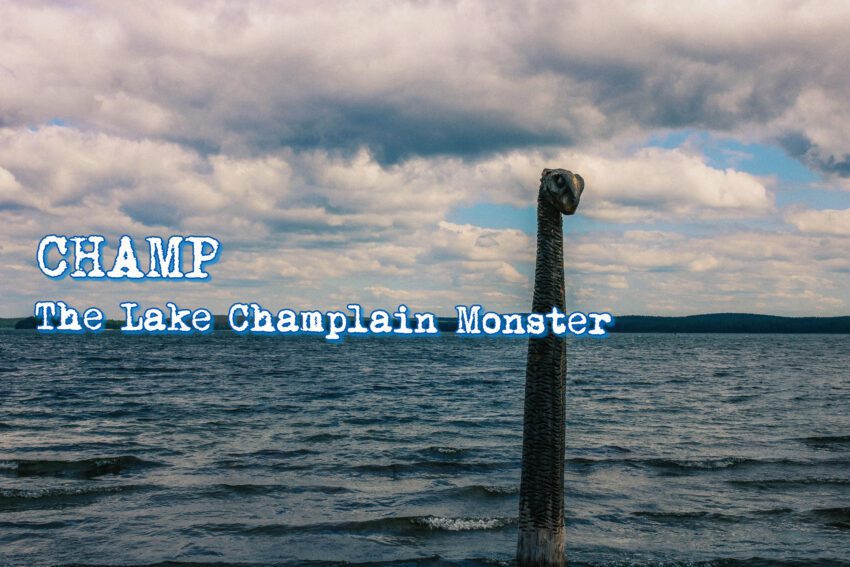
Champ | Lake Champlain’s Resident Monster
Straddling New York, Vermont and Quebec, Lake Champlain holds a monster inside its murky depths. Champ, an aquatic beast, lies hiding underneath the waves. Indigenous people have known about this monster for centuries before European settlers reported it. Get more scoop on Champ after the jump.
Champ’s History of Sightings
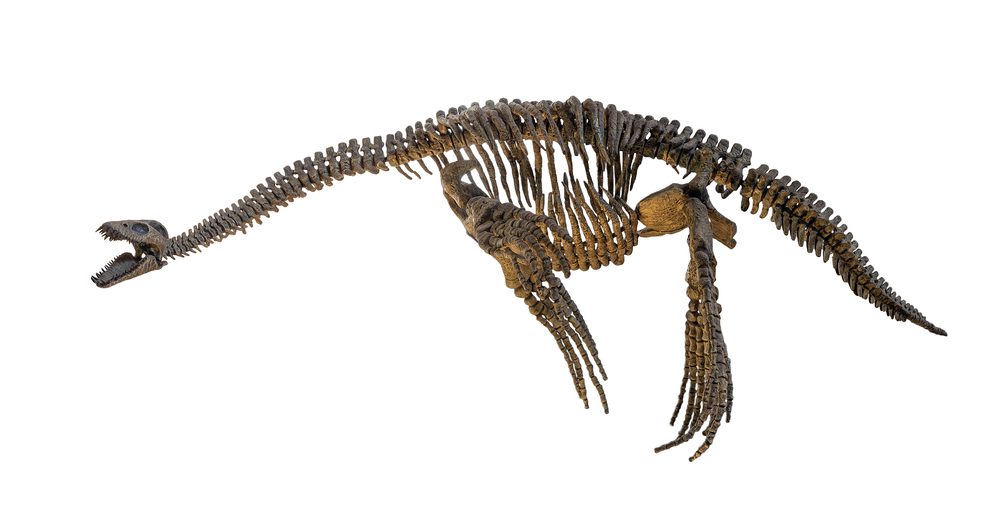
Over 300 reports of Champ date back to the 1600s when the French first surveyed the area. Local tribes have stories that go back centuries, but it seems the more recent encounters and sightings have started in the 1930s. There was an uptick in sightings between 1930 and the 1980s, and again starting in 2002.
Native American Folklore
The Abenaki people, who are native to the Lake Champlain region, have legends about a large creature inhabiting the lake. These stories were passed down through generations and contributed to the mythical reputation of the lake.
Samuel de Champlain
The first European explorer to report a strange creature in Lake Champlain was Samuel de Champlain, the French explorer after whom the lake is named. In 1609, Champlain documented a sighting of a large serpent-like creature in the lake. His account is often cited as one of the earliest references to a mysterious creature in Lake Champlain.
Note: There is conflicting historical information if de Champlain actually witnessed the monster himself.
21st Century Reports
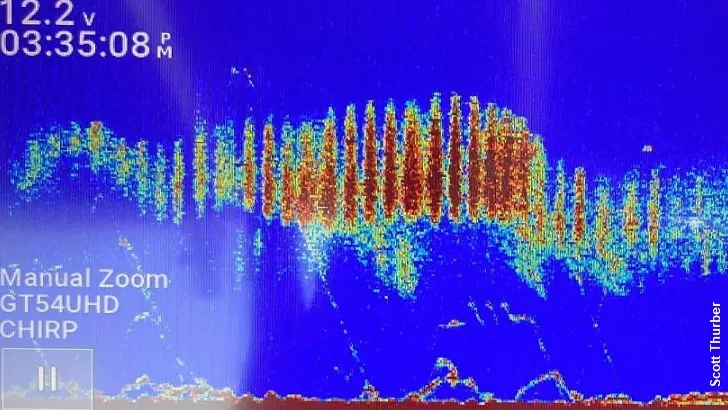
After a flurry of reports in the 1980s, sightings were reported less often, with only 1 or 2 reports a year in the early 2000s. There was one video captured in 2006 by Dick Affolter, which showed a plesiosaurus-like creature opening and closing its mouth. In 2016, cryptozoologists Katy Elizabeth and Dennis Hall found crocodilian tracks in the mud along the lake, but those were debunked as a snapping turtle. Footprints like that would definitely rule out a plesiosaurus or serpent since they don’t have feet.
The most promising sighting may be from Scott Thurber, who captured a plesiosaurus-like creature with his fishing sonar. The shape definitely looks like an aquatic dinosaur, but it may be pareidolia of a school of fish.
Physical Description
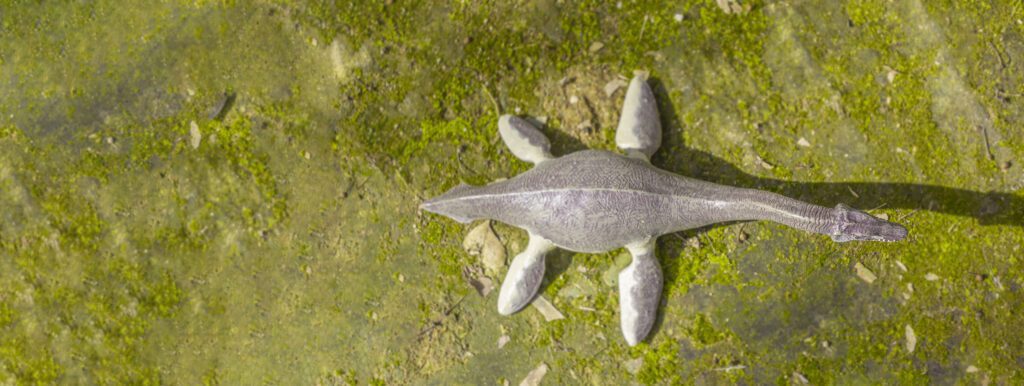
The descriptions of Champ often involve a creature with a long neck and humps, which may lead some to draw parallels with certain types of dinosaurs like plesiosaurus or other long-necked marine reptiles.
Samuel de Champlain’s description stated the lake monster was 5′ long and as thick as his thigh. He also described its jaws as 2 1/2 feet wide with sharp and dangerous teeth.
In modernity, Champ has 2 descriptions; one matches a plesiosaurus, the other as a serpent. Most witness reports say the creature is 20′-to-30′ feet long, but its width and weight aren’t clear. A 1983 witness report stated Champ had a long neck and what looked like 4 tires rising from the water, which better fits a serpent-like monster.
Investigations & Evidence
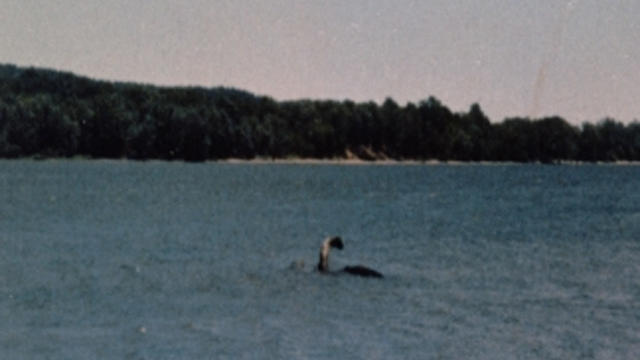
The most thorough investigation appears to be by Joe Nickell and Benjamin Radford in August 2002.
One part of their investigation dealt with the veracity of Sandra Mansi’s photograph from 1977. It’s probably the clearest picture of Champ available.
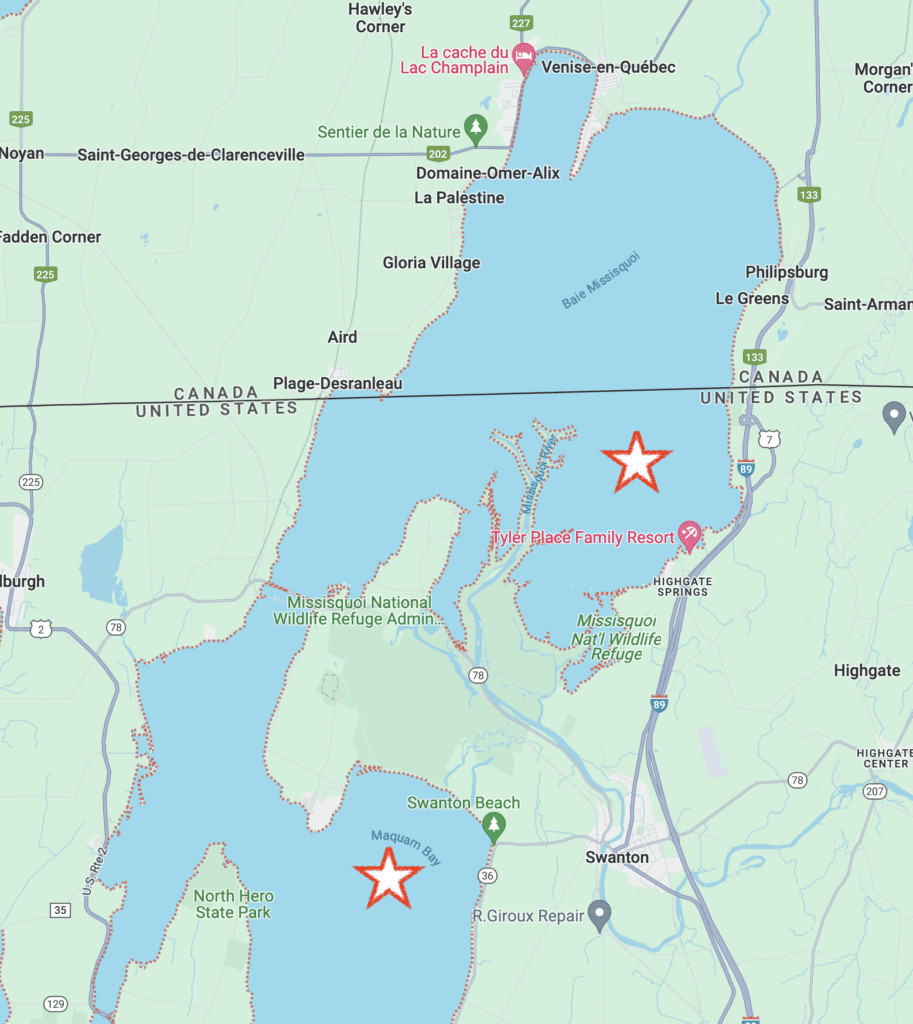
Mansi took the photo in the northeast corner of Lake Champlain, which is not a common sighting area. That would be Maquam Bay or Missisquoi Bay. Mansi believed that Champ was about 150 feet from the shore in this picture. However, the researchers and Mansi couldn’t find the exact location, so they couldn’t replicate it. In both bays, the water depth is less than 15 feet, so it would be hard for a creature the size of Champ to swim well. Please see the Natural Zoological Perspective for what they believe is actually Champ.
Read the full report, “Legend of the Lake Champlain Monster.”
Habitat
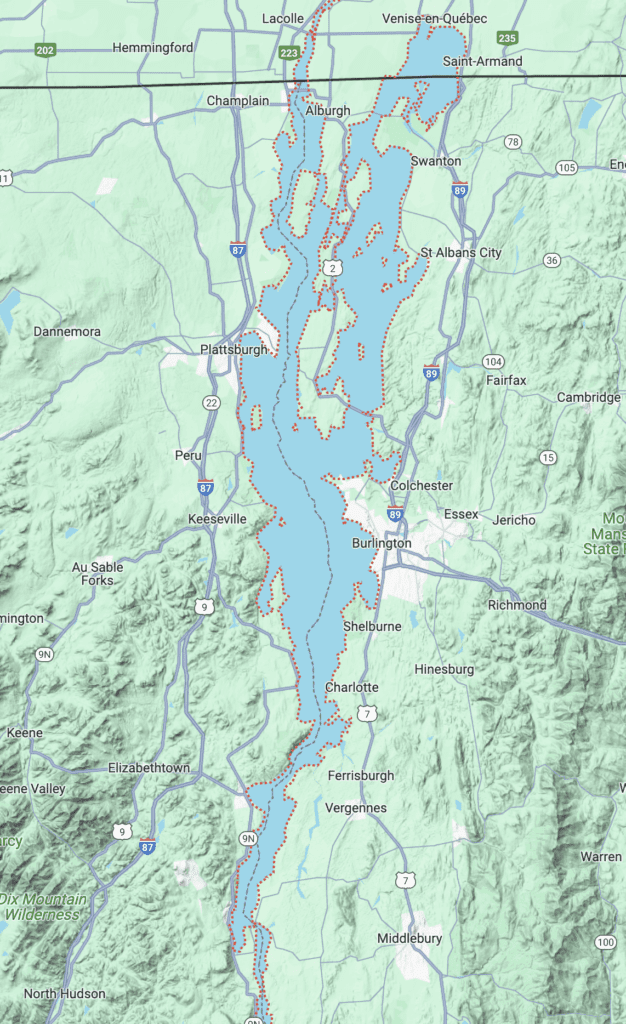
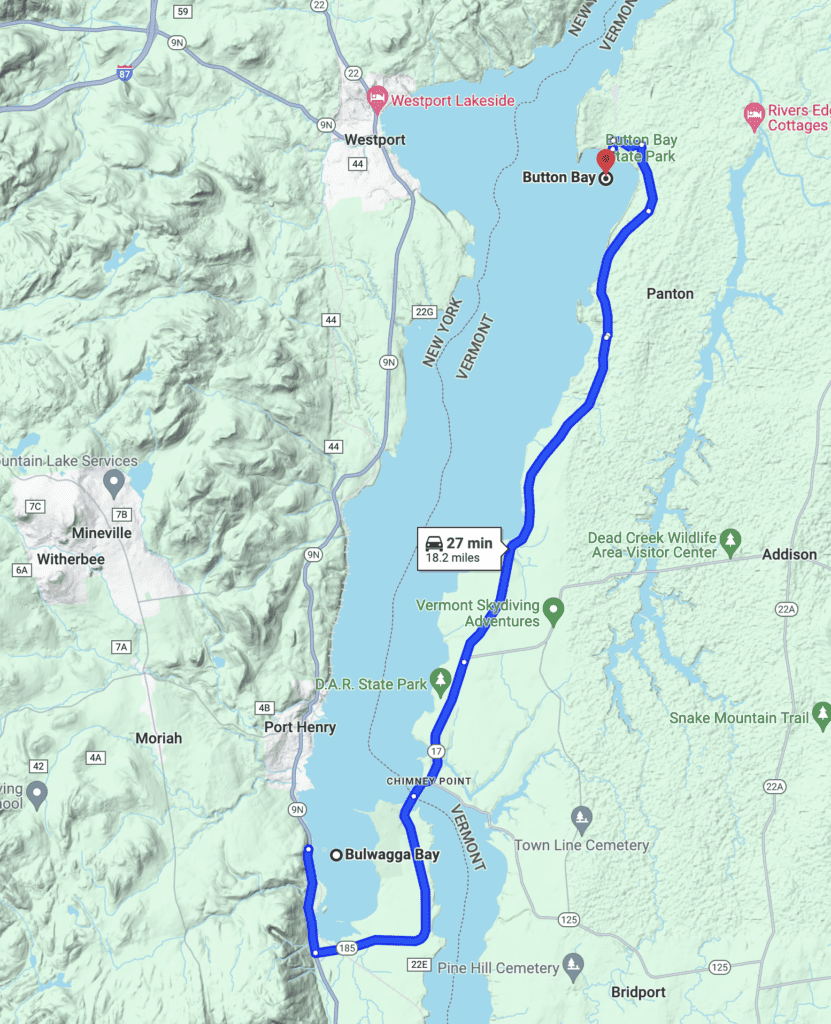
You can find Champ in Lake Champlain, which forms the border between New York, Vermont, and it encroaches into Quebec, Canada.
Lake Champlain is a glacial lake formed during the Ice Age. As the glaciers melted, it filled the Champlain Valley with freshwater, creating the lake we know today. Lake Champlain is not directly linked to the Atlantic Ocean, but the Richelieu River (Quebec) provides a route from the lake, to the Saint Lawrence River, and out to the Atlantic Ocean. The lake also access the Hudson River via the Champlain Canal, although if Champ tried to reach the ocean this way, it would be quite noticeable.
An aquatic creature the size of Champ would require a sizeable population of fish, crustaceans and mollusks to survive. Luckily, Lake Champlain offers an abundance of lake trout, lamprey, eel, walleye, pike and perch. Zebra mussels, an invasive species, has also found their way into the lake’s ecosystem. It’s unclear if Champ would eat algae, but that’s another food option.
On another note, there’s never been a report of Champ harming mammals or coming onshore.
Lake Champlain generally freezes over along the shoreline, but it has fully frozen in winter. It’s unclear how Champ would deal with these environmental conditions.
A Cryptozoological Perspective
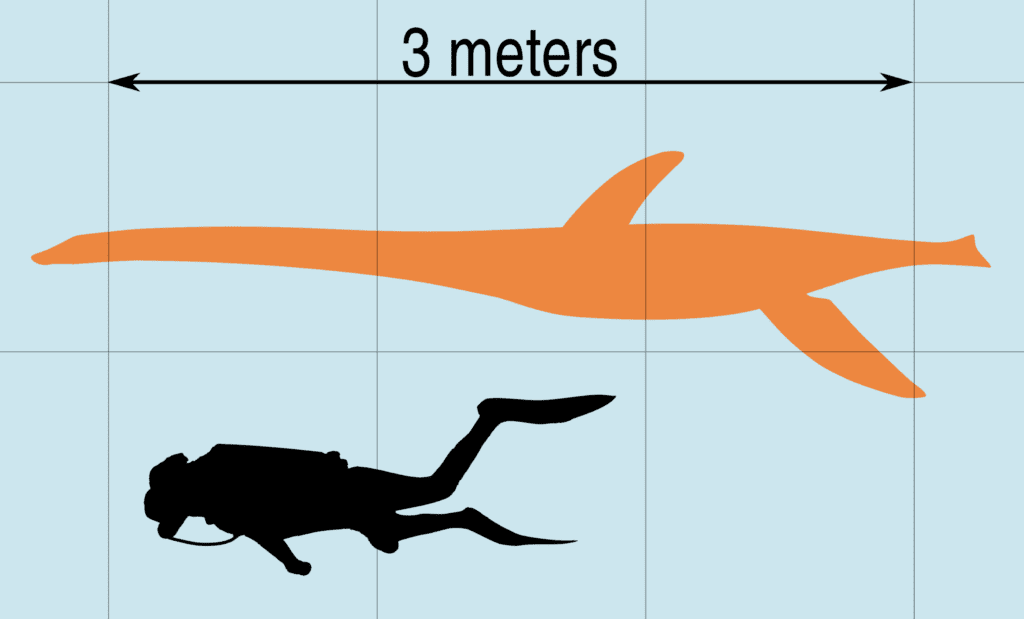
Cryptozoologists believe Champ could be a plesiosaurus or some type of unknown serpent. Plesiosaurus went extinct over 65 million years ago, so there’d have to be some kind of mutant aquatic animal that may look like one. As a freshwater lake, it would likely be lethal to a dinosaur. Also, the freezing temperatures and ice would certainly kill a dinosaur.
I haven’t found much research into the serpent-like version. There are more than 20 witness accounts that state they saw a cylindrical body, which is definitely not a plesiosaurus in form. Lake Champlain has lampreys and American eels, which can grow over 5′ long. So, those 2 (mutant?) critters may explain the serpent sightings.
The most recent evidence (from Scott Thurber) strongly suggests a plesiosaurus swims in the murky depths of Lake Champlain.
A Natural Zoological Perspective
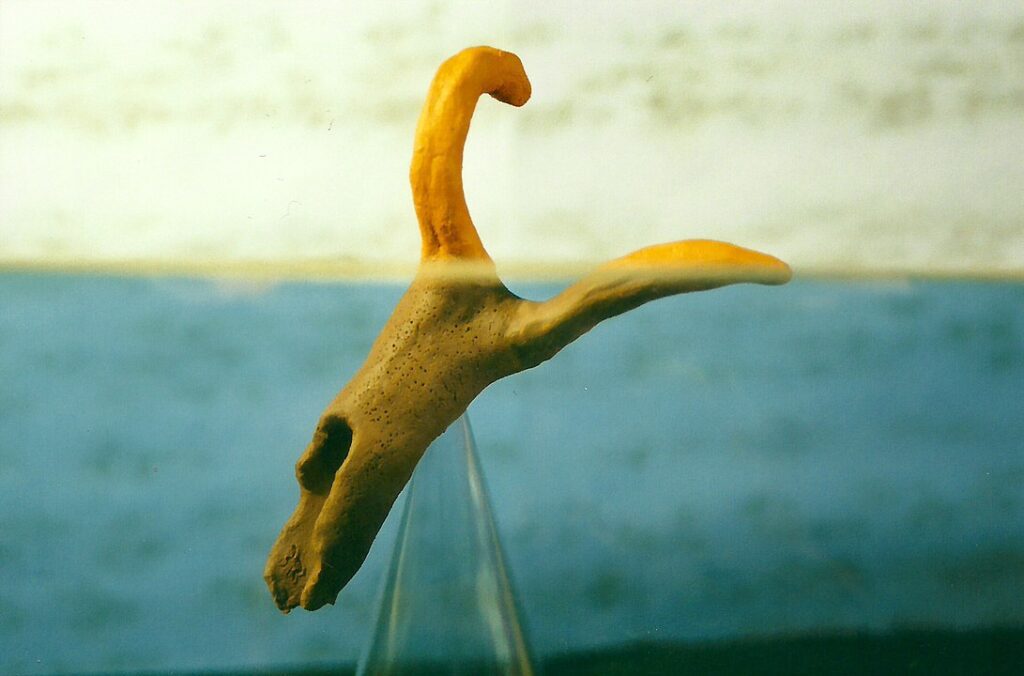
Scientists don’t think there’s a dinosaur in the lake, nor do they think some sort of sea serpent lives there. In most cases, they think Champ sightings fall under these reasons:
Known Animals
Most scientists as well as skeptics think Champ is one of these critters:
- Sturgeon, which grow as long as 15′ and weigh over 300 lbs.
- Gar, another large fish with a long snout, that swims close to the surface
- North River Otters, which look like a looping serpent when playing in the water
Hoaxes
I haven’t found anything that appears to be someone hoaxing. I mean, there have been a lot of witness reports and sightings. Usually, a hoax gets exposed over the years, and that hasn’t happened with any of the few photos or videos available. The Mansi video was certified as legit by a forensic expert. That doesn’t mean there’s a natural reason for Champ sightings. It just means the picture wasn’t altered in any way.
Pareidolia
Pareidolia happens a lot in the paranormal world. It’s when your brain makes meaning out of random sights, sounds and scents, like seeing an image of Jesus on toast.
In this case, people may see random bow wakes, and then think they see a lake monster moving rapidly just underwater. They could also see a tree trunk floating in the middle of the lake and think it’s the head, neck and torso of Champ.
The only way to truly test if you experience pareidolia is to get in a boat and row out to the sighting. Things become much clearer when you get the spot and see, hear and touch the stimuli.
What To Do If You Encounter Champ
Champ has never been aggressive to modern witnesses. If you see it, whip out your phone, press Facebook Live or YouTube Live, and show the world what you’ve found. This is one monster we’d love to be real.
Sources:
Scott Thurber (July 2023). “Lake Champlain Monster Spotted on Sonar?,” Share to Facebook and I Heart Radio station sites, retrieved from: https://1460kltc.iheart.com/featured/coast-to-coast-am/content/2023-07-28-lake-champlain-monster-spotted-on-sonar/
Joe Nickell & Benjamin Radford (August 2003). “Legend of the Lake Champlain Monster,” Center for Skeptical Inquiry, retrieved from: https://cdn.centerforinquiry.org/wp-content/uploads/sites/29/2003/07/22164717/p18.pdf
Google Maps (November 2023). Images of Lake Champlain for Mansi photo estimates, most common sightings in Bulwagga Bay and Button Bay, and geographic location in the USA and Canada.
Editors (November 2023). “Champ (folklore),” Wikipedia, retrieved from: https://en.wikipedia.org/wiki/Champ_(folklore)
Editors (November 2023). “Lake Champlain,” Wikipedia, retrieved from: https://en.wikipedia.org/wiki/Lake_Champlain
William Alexander (May 2023). “Champ the Lake Monster,” Vermonter.com, retrieved from: https://www.vermonter.com/champ-lake-champlain-monster/
April Fisher (August 2022). “Evidence of Champ? An overview of Lake Champlain’s most famous sightings,” Burlington (VT) Free Press, retrieved from: https://www.burlingtonfreepress.com/story/life/2022/08/17/vt-top-sightings-of-champ-the-lake-champlain-monster/65401829007/
Sandra Mansi (July 1977). Champ photo, CBS News, retrieved from: https://www.cbsnews.com/pictures/photos-champ-american-loch-ness-monster/
Staff writer (no date). “Champ: Real Or Imagined. A Vermont Legend,” West Hill House B&B, retrieved from: https://westhillbb.com/blog/2021/04/champ-legend-vermont/
Adam Phillips (May 2006). “Is Lake Champlain Home to a Sea Serpent?,” Voice of America, retrieved from: https://web.archive.org/web/20120331160149/http://www.voanews.com/english/news/a-13-2006-03-21-voa14.html
Scott Mardis (Fall 2016). “A Champlain ‘Croc’ of Mythic Proportions”. Skeptical Briefs. pg 26, Center for Inquiry.
Staff writer (no date). “Champ, the Lake Champlain Monster,” Lake Champlain Region, retrieved from: https://www.lakechamplainregion.com/heritage/champ
Scott Mardis (June 2019). “Eric Olsen “Champ” Video May 31 2009,” YouTube, retrieved from: https://www.youtube.com/watch?v=pmWbL60mMY0
Slate Weasel (April 2019). “Plesiosaurus Scale,” Own work, Wikimedia Commons, retrieved from: https://commons.wikimedia.org/wiki/File:Plesiosaurus_Scale.svg
Lohr McKinstry (June 2021). “Katy Elizabeth: Champ is out there somewhere,” The Press-Republican (Plattsburgh, NY), retrieved from: https://www.pressrepublican.com/news/local_news/katy-elizabeth-champ-is-out-there-somewhere/article_f4b15ca8-5dc3-533e-9995-3accfe374d9d.html
Staff writer (June 2009). “Video Revives Lake Champlain Monster Mystery,” ABC News, retrieved from: https://abcnews.go.com/Technology/AmazingAnimals/story?id=7760355

Jacob Rice began investigating and writing about monsters in 2007. He has published 3 books on ghost hunting, ghost stories and paranormal protection. His podcast, Ghostly Activities, dives into these topics even more. You can also watch his ghost hunts on the Ghostly Activities YouTube channel. He lives in Olympia, Washington.